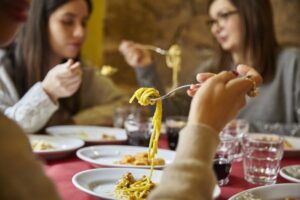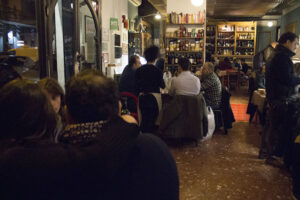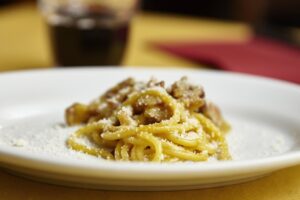Last Updated on July 31, 2024 by Cassandra Gambill | Published: March 12, 2019
I have a standard quip with those who come to visit me in Rome: When you’re hungry, there’s nothing quite like Roman food to satisfy that hunger.
When you’re full, there’s nothing you’d less like to eat than Roman food. Cucina Romana isn’t for everyone. It’s full of bold, unusual flavors like sheep’s-milk pecorino and bitter chicory. Many of the plates are quite rich, like carbonara (cured pork jowl, cheese and egg). And Romans, more than anyone else in Italy, love the lesser parts of the beast: liver, intestines, heart and tongue.
If you’re half-hungry, or just a timid eater, a big plate of cacio e pepe or braised tripe is really, really, really not what you want. But for those, like me, who love Roman food, a Saturday night with friends, sharing fried artichokes and some amatriciana, is as good as eating gets.
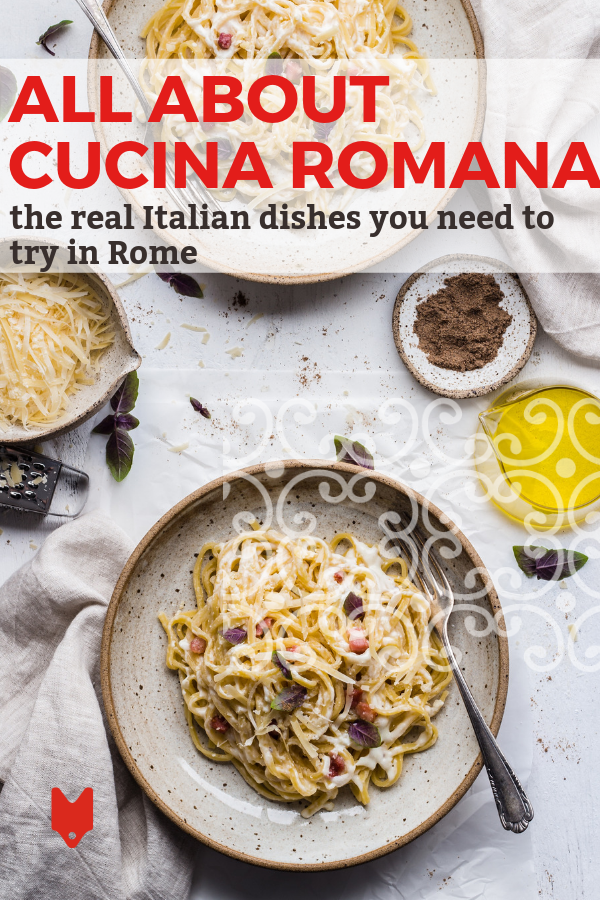
When I eat out in Rome, I always take a minute to marvel at the menu. Even if I already know what I want, I like to gaze up and down the pages, admiring the names of the dishes.
Coda alla Vaccinara, Rigatoni con la pajata, carciofi alla giudia, pollo con i peperoni. It’s as if each item is whispering “you’re in Rome, you’re in Rome, there’s nowhere else you could be right now other than Rome.” For me, Roman food is what I like to eat, both at home and out. It’s also a means through which I can feel Roman. I’m an Italian-American whose ancestors come from Southern Italy. I live in Rome but wasn’t born here. However, when I ask a waiter where the artichokes are from, or say I want my pizza bianca stuffed with mortazza (Roman dialect for mortadella), I feel as if I’ve earned my spot at the metaphorical Roman table.
So what is cucina romana exactly? Is it some codified group of recipes? The regional variations of standard Italian dishes? Literally everything, even hamburgers, that people in Rome eat regularly? I’d say it’s all the stuff that Romans recognize as their own. Coda alla Vaccinara is such a dish. Invented by tanners in the 18th century, it’s a hearty preparation of oxtails braised in tomato sauce with warm spices, a pinch of chocolate, and a huge amount of celery. Not only is coda something you find in almost every Roman trattoria, it’s something people have strong opinions about. Some like big chunks of celery, others like some raisins, still others think it’s best made with a dollop of strutto (lard) instead of olive oil.
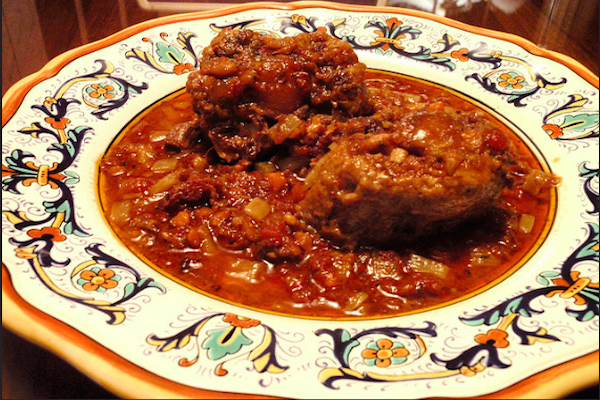
Roman food is a subject, like soccer or an upcoming election, that’s at once shared and intimate. I remember once striking up a conversation with a group of young Roman guys in a crowded bar on Friday night. They were arguing about carbonara: short versus long pasta, whole egg or just the yolk, deglaze the guanciale (cured pork jowl) with white wine or not. I mentioned how nice a carbonara looked when made with the orange yolks of fresh eggs. One of the guys took a swig of beer and said, in between burps, that “carbonara should be as black as coal from the pepper. That’s why it’s called carbonara.”
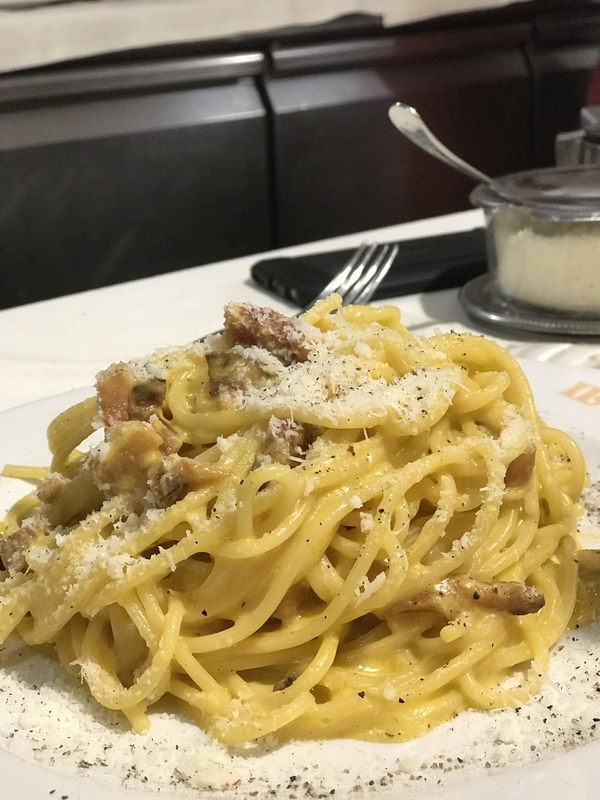
We don’t have the space here to go into all the (fascinating) history of Roman food, with its various influence from peasants, Jews, foreign trade and intra-Italian migration. What I can give you are the fundamentals. The famous Roman singer Alvaro Amici had a hell of a voice (and belly), and when he described Rome in a song, it was usually accompanied by mention of abbacchio, pecorino and fava beans. The latter two are traditionally eaten together on the First of May. Pecorino is a strong sheep’s-milk cheese that has a distinctive sharp, “sheepy” flavor, and in Rome is omnipresent. If you go to Antica Caciara (Via di S. Francesco a Ripa, 140A/B) in Trastevere, you’ll be hit with a right hook of pecorino perfume, as Roberto the proprietor cracks whole wheels open and carves them up.
Abbacchio is another ovine item, this time a meat. The lamb you find in America is usually around a year old, but abbacchio is no more than a month or two, entirely milk fed, rendering meat that’s pink and tender. Rome is city most identified with baby lamb, and every restaurant has abbacchio, often roasted with potatoes. Or, how I like it, allo scottaditto —“burn your fingers,” because the little chops are grilled and then meant to be picked up by the bone and gnawed on.
Let’s not forget that Rome is still part of Italy, and Roman food includes many pan-Italian items. Romans eat pasta and pizza and prosciutto. Families might have meatballs in tomato sauce for dinner one night, a frittata with salad another, and a simple lasagna for Sunday lunch. All good, honest home cooking, stuff any Italian would like.
But there are some ingredients that make stuff taste truly Roman. Pecorino, obviously, but also guanciale, black pepper, wild mint and rosemary. Bitter greens like chicory and the uber-Roman puntarelle (a chicory relative that’s served raw with anchovy and vinegar). Abbacchio. Artichokes. Pajata (calf intestines that still have mother’s milk inside.) Walk into any market in Rome and you’ll know exactly where you are.
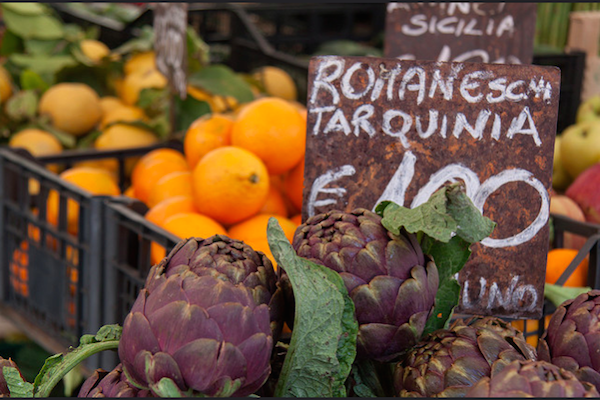
I’ve eaten many wonderful meals in Italy. A plate of sardines in Venice. A thick, bloody steak in Siena. The most amazing, simple pasta with swordfish and tomatoes in Sicily. But when I really think about what I’d like to eat for lunch, I think about Rome in early spring. A fried artichoke. A nice big plate of carbonara, made with lots of guanciale and not too much egg. A portion of abbacchio allo scottaditto with a side of puntarelle. I may not live in Rome forever, so for the moment, I’ll be eating this lunch as often as I can.
Want to try some of the most classic cucina romana dishes for yourself? On our Testaccio Neighborhood Food & Market Tour, you’ll sample some of the best of the best Roman food (not Italian food—and yes, there is a difference) the city has to offer. Join us for a morning of foodie fun and learn what it truly means to eat like a local in the Eternal City.
